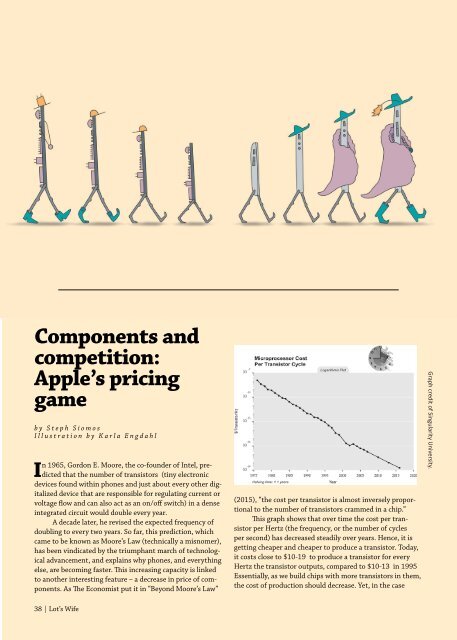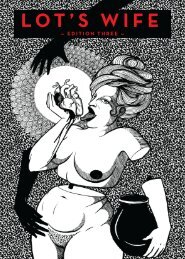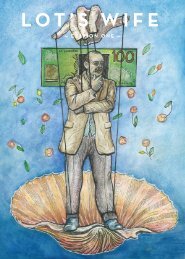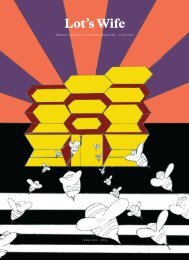Lot's Wife Edition 2 2016
Create successful ePaper yourself
Turn your PDF publications into a flip-book with our unique Google optimized e-Paper software.
Components and<br />
competition:<br />
Apple’s pricing<br />
game<br />
by Steph Siomos<br />
Illustration by Karla Engdahl<br />
In 1965, Gordon E. Moore, the co-founder of Intel, predicted<br />
that the number of transistors (tiny electronic<br />
devices found within phones and just about every other digitalized<br />
device that are responsible for regulating current or<br />
voltage flow and can also act as an on/off switch) in a dense<br />
integrated circuit would double every year.<br />
A decade later, he revised the expected frequency of<br />
doubling to every two years. So far, this prediction, which<br />
came to be known as Moore’s Law (technically a misnomer),<br />
has been vindicated by the triumphant march of technological<br />
advancement, and explains why phones, and everything<br />
else, are becoming faster. This increasing capacity is linked<br />
to another interesting feature – a decrease in price of components.<br />
As The Economist put it in “Beyond Moore’s Law”<br />
(2015), “the cost per transistor is almost inversely proportional<br />
to the number of transistors crammed in a chip.”<br />
This graph shows that over time the cost per transistor<br />
per Hertz (the frequency, or the number of cycles<br />
per second) has decreased steadily over years. Hence, it is<br />
getting cheaper and cheaper to produce a transistor. Today,<br />
it costs close to $10-19 to produce a transistor for every<br />
Hertz the transistor outputs, compared to $10-13 in 1995<br />
Essentially, as we build chips with more transistors in them,<br />
the cost of production should decrease. Yet, in the case<br />
Graph credit of Singularity University.<br />
38 | Lot’s <strong>Wife</strong>

















